SUBTERRANEAN TERMITES
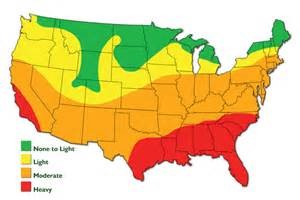
Subterranean termites live underground.
Their colonies can consist of hundreds of thousands, to millions of members, making them the most destructive termite species in our area.
These termites cause billions of dollars of damage to homes, historical structures and commercial buildings each year.
They are a social insect, meaning they live in colonies and manifest three characteristics: group integration,
division of labor and overlap of generations.
PRIMARY REPRODUCTIVES (King and Queen):
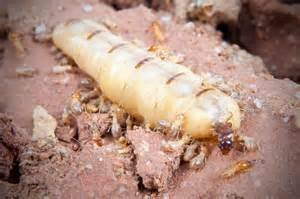
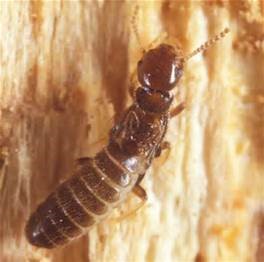
The King and Queen termite can live for over a decade and will spend their entire lives underground. They are the only caste with functional eyes.
The queen termite is responsible for laying eggs. Egg production is slow at first, but increases over time. As the queen begins to lay eggs, her abdomen will stretch
with the development of her ovaries allowing her to lay several thousand eggs per year. The queen is much larger than the other termite castes.
WORKER CASTE:
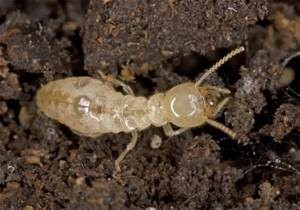
The workers truly live up to their name.
They are responsible for repairing the nest, constructing mud tubes, caring for the young, feeding and grooming the other colony members.
They are milky white in color and have no wings or eyes.
Although they are soft bodied, their mouth parts are strong enough to chew through wood.
SOLDIERS:
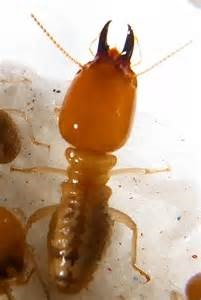
Just as the name suggests, the soldier termites protect the colony.
Like worker termites, the soldiers have no wings or eyes. They have a large, hard, yellow to brownish colored head.
The head has a pair of mandibles which are used to puncture, slice and kill enemies.
ALATES (swarmers)
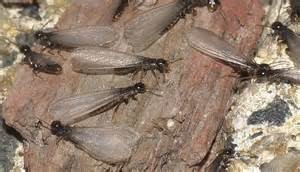
Alates are the winged reproductive termites.
Once a colony is mature enough, it will start to develop swarming termites.
These termites are potential kings and queens. Their main objective is to fly away from the existing colony, burrow into the ground, and begin breeding to start new colonies.
Subterranean termites randomly forage in search of a food source. They will search underground as well as above ground.
They produce and communicate through chemical scents called pheromones. They secrete this chemical odor from glands on their abdomen. When a food source is found, the odor trail is intensified to recruit other foraging termites to the feeding site.
Because Subterranean termites are very sensitive to air and light, the worker termites will construct and travel through mud tubes, which also protect them from ants and other foreign termite colonies. The termites will build different types of mud tubes, each serving a specific purpose.
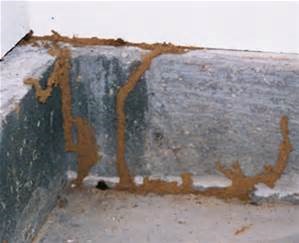
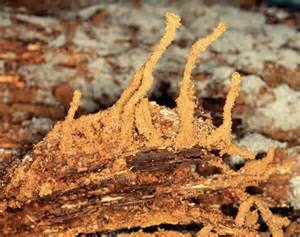
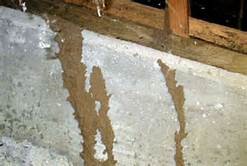
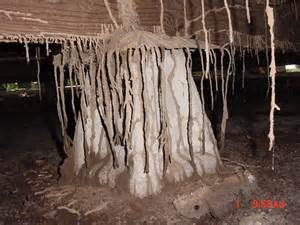
Subterranean termites are very vulnerable to desiccation, and require a constant supply of moisture. This is why they live underground.
Soil has the capacity to hold water for a long period of time, keeping the colony moist.
Mud tubes provide the termites with a constant connection to the soil, so they can return to replenish their
body moisture.
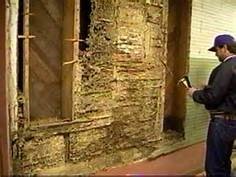
On some occasions, subterranean termite colonies will become established above ground. They will build “aerial” or “carton nests”. Above ground colonies are usually the result of an excessive moisture problem within the structure.
Subterranean termite damage can go unnoticed because
the termites attack the softer spring wood, leaving the harder, less digestible wood along the grain
and exterior surface intact. In other words, your baseboard may look solid, but could very well be hollowed out.
The damaged wood has a layered or channeled appearance.
The excavated galleries often contain soil and specs of fecal matter.
The most effective way to prevent or control subterranean termites is by hiring a licensed pest control operator. Ridding a home of termites requires special skills, tools and knowledge of these pests. An understanding of construction is needed to identify critical areas where termites are likely to enter. Termite technicians are also trained to recognize and advise homeowners on how to eliminate conditions which are conducive for termite attack. Below are just some of the many reasons why subterranean termites may be targeting your home.
- WOOD-TO-GROUND CONTACT
Earth to wood contact provides termites with access to food, moisture, shelter and a hidden entry point into the structure.
- WOOD DEBRIS
Cellulose materials located on or beneath the soil attract termites and provide a constant source of food.
- VEGETATION
Shrubs, vines and other dense vegetation should not grow against the siding or foundation of the home. Heavy vegetation traps moisture which is conducive for termites and wood decay.
- EXCESSIVE USE OF MULCH
Mulch or wood chips should be used sparingly and should never make contact with siding or framing for windows and doors.
- MOISTURE RELATED CONDITIONS
Termites are attracted to moisture and are more likely to infest a structure that is consistently wet. The grade should be sloped so the surface water drains away from the building.
Eaves and downspouts are useful in diverting water.
Roof and plumbing leaks should be repaired to avoid making the building conducive for above ground termite colonies.
- POOR VENTILATION
Moist or humid crawl spaces promote termite infestations.